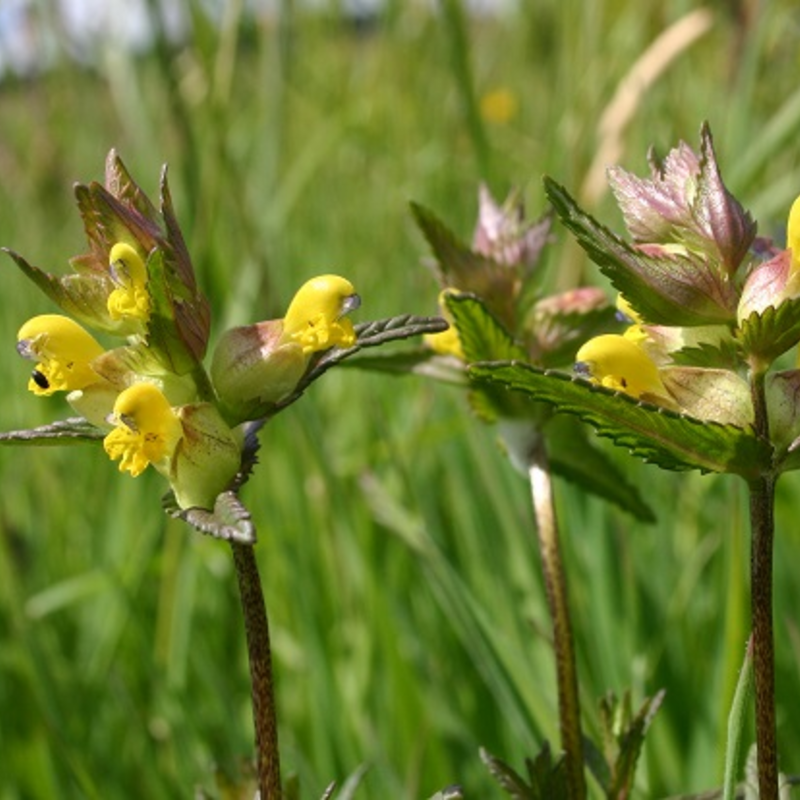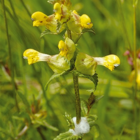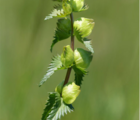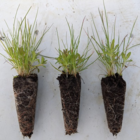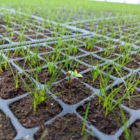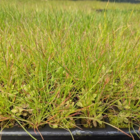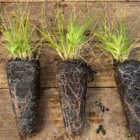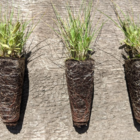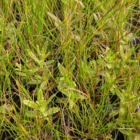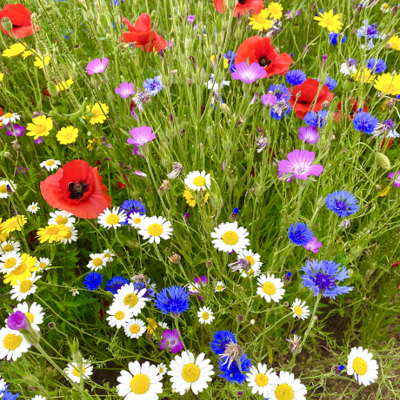Click here for delivery information and charges.
Yellow Rattle Plug Plants (Rhinanthus minor)
This surprisingly musical meadow flower is a must-get for a wildflower garden: as a semi-parasitic plant, it requires robust neighbour plants like grasses and legumes, but also acts as a watchdog against vigorous weeds... and that's on top of the beauty of its golden, bell-shaped flowers, complete with a charming 'chime' as its ripened seed pods rattle in the breeze.
Our yellow rattle plug plants are grown from fresh, UK native seed from wild meadow collections, and arrive ready to be planted complete with the essential meadow grasses.
- Type: Annual
- Height: 20–50cm.
- Flowers: May-September
- Soil Requirement: Moist or well-drained
- Light Requirement: Full sun
- Natural Habitat: Grassland, meadows
- Also known as: Corn Rattle, Hay Rattle, Penny Grass
Click here for delivery information and charges.
Mixture Specification
Boston Seeds' yellow rattle plugs begin their journey in autumn when fresh yellow rattle seeds from UK meadow collections are sown into individual cells alongside the essential meadow grasses. Cold weather over winter enables vernalisation for the plants to begin growing from early spring, ready for delivery to customers from April for immediate planting.
Boston Seeds' yellow rattle plug plants are always:
- Produced from fresh seed of UK provenance.
- Supplied with first leaves and well-established, healthy root networks.
- Grown with the essential meadow grasses for yellow rattle plugs to thrive.
Buy with confidence from Boston Seeds - the UK's most trusted supplier of native British wildflower seeds for over twenty years.
Sowing & Establishment
1 - Location
Where to plant yellow rattle plugs?
Plant yellow rattle plugs in full sunlight and into well-drained soils wherever possible. Our yellow rattle plugs are delivered with the essential slow growing, meadow grasses for yellow rattle to thrive, so can be planted into bare soil or into existing grass and wildflower meadows. Avoid areas containing high vigour, fast growing grasses such as ryegrass.
2 - Planting Time
When to plant yellow rattle plugs?
Yellow rattle plugs are delivered in April, ready to be planted out immediately into your garden or meadow. If you are unable to plant straight away, open the box, place in sunlight and keep moist until they can be planted out within a few days.
3 - Planting Density
How many yellow rattle plants per square metre?
Ideally, yellow rattle plugs should be planted between 3-5 plugs per sqm. However, lower densities are also suitable for a more sporadic display.
4 - Ground Preparation
How to prepare the ground to plant yellow rattle plugs?
Cut any existing grass as short as possible with cuttings removed. Reducing the growth of the existing grass provides more light and space for the plugs to establish.
5 - Planting the Plugs
How to plant yellow rattle plugs?
Remove the plugs from the tray and make a small hole to put the plug into and place the plug into the hole. Recover with soil and press down firmly around the plant to ensure good contact with the surrounding soil. Lightly water to keep the area moist if required, but avoid over-watering. Yellow rattle is an annual wildflower species and will flower in the year planted, from May onwards.
Maintenance
1 - Annual
Yellow rattle is an annual so it will require ongoing maintenance and a regular cutting regime for it to self-seed and flower the subsequent years. Populations of yellow rattle may die out after a year if the seed heads are not allowed to drop seed.
2 - Weeding
Remove weeds and undesirable plants by hand throughout the yellow rattle growing season.
3 - Autumn Cut
As yellow rattle is an annual, an autumn cut is required in order for it to self-seed and flower the following year. Once it has died back, they will need cutting to around 10cm in height, leave the cuttings on the surface for around 7-10 days. This will allow the seed heads to dry out and for the seed to have drop into the soil for flowering the foillowing year. After this time, it is important to remove the cuttings else they can mulch back into the soil, making the soil richer and more fertile.
